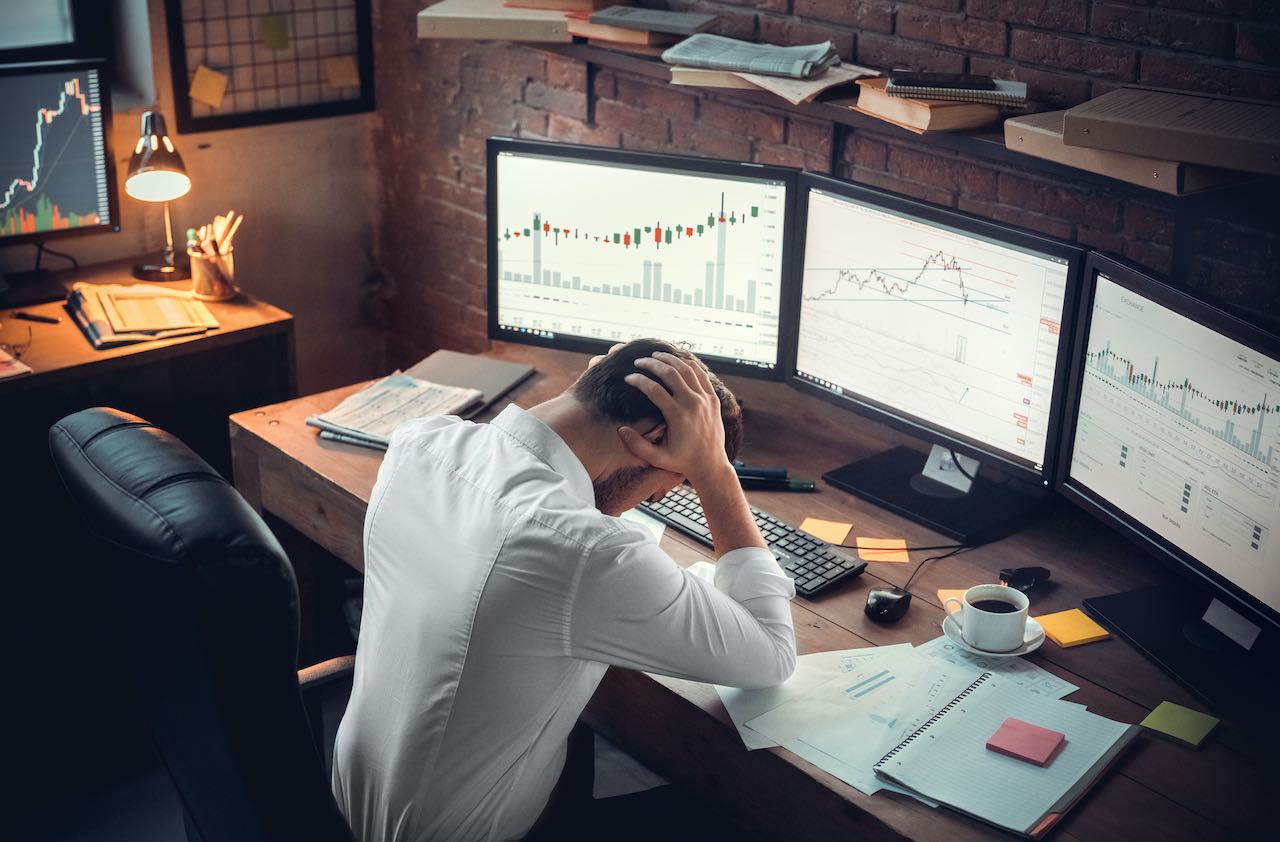Goldberg's Picks: The 5 Best Stock Funds for 2011
These stock funds should deliver superior returns in the coming year.

The U.S. economy is getting better, albeit at a slower pace than any of us would like. But debt troubles in Europe aren’t going away, and there is growing risk that emerging markets will overheat.
What’s an investor to do? The good news is that the world’s best companies -- large, highly profitable, growing companies with little or no debt -- are still trading at surprisingly low price-earnings ratios. In putting together a list of the best stock funds to own this year, I consider that fact to be paramount.
Below are my five favorite actively managed stock funds for 2011, along with my recommendations for how much weight to give each in the stock portion of your portfolio.

Sign up for Kiplinger’s Free E-Newsletters
Profit and prosper with the best of expert advice on investing, taxes, retirement, personal finance and more - straight to your e-mail.
Profit and prosper with the best of expert advice - straight to your e-mail.
SEE MY 4 BEST BOND FUND PICKS FOR 2011
Fidelity Contrafund (symbol FCNTX) returned 16.9% in 2010, beating Standard & Poor’s 500-stock index by two percentage points. That’s nothing new for Will Danoff, who has piloted this fund for more than 20 years. Over the past ten years through December 31, the fund returned an annualized 5.5%, topping the S&P 500 by an average of four percentage points per year. Fidelity isn’t my favorite fund shop, but Danoff and a few other Fidelity managers have produced magnificent results. Danoff’s specialty is blue-chip growth stocks. Indeed, 25% of the fund is currently in technology stocks, such as Apple and Google. Put 25% of your stock money here. (Contrafund, like three of the other funds on my list, is a member of the Kiplinger 25.)
Primecap Odyssey Growth (POGRX) also looks for growth stocks, of both large and midsized companies, but prefers to pick them up when they’re on sale. Right now, the fund’s managers find the bargain bin filled with health-care stocks, largely because of overblown fears about health-care reform. The fund has 40% of its assets in such companies as Amgen, Eli Lilly and Medtronic. Another 24% is in tech stocks. Primecap, which returned 15.4% in 2010, has outperformed the S&P 500 in four calendar years out of six since its inception in late 2004. But what really gives me confidence in Primecap Odyssey is that the same team runs Vanguard Primecap, a fund that’s closed to most new investors. Vanguard Primecap returned an annualized 4.0% over the past ten years -- 2.6 points per year better than the S&P. Invest 25% of your stock money in Primecap Odyssey.
FPA Crescent (FPACX) is a perfect fund for investors who fear that the market could hit big speed bumps but who want stock-like returns. I don’t expect Steve Romick, as brilliant as he is, to repeat his performance of the past ten years -- a period in which his fund returned an annualized 11.6%, including a gain of 12.0% in 2010. But I do expect him to beat the competition. Romick rarely puts more than half of his fund in stocks. He currently has 33% of its assets in cash. His fund owns bonds, and shorts stocks -- that is, bets they’ll decline in price. Crescent will never lead the pack during a bull market. But Romick has a record of protecting shareholders in bad times. Crescent lost only 27.9% during the bear market that began Oct. 9, 2007 and ended March 9, 2009, compared with a 55.3% rout for the S&P. Put 25% of your stock money in this gem -- more if you’re a worrier.
Oakmark International (OAKIX) invests solely in foreign stocks. Manager David Herro is a terrific stock picker who’s not afraid to buck conventional wisdom (see 4 Plays for Contrarian Investors). Amid the European debt crisis, Herro has invested in the stocks of a handful of European banks, arguing that their prices have been beaten down too severely. He also has turned bullish on Japan, and thinks emerging markets are overpriced. Last year, Oakmark gained 16.2%, clobbering the MSCI EAFE index by 8.5 percentage points. Over the past ten years, the fund returned an annualized 8.5%, five points per year better than the EAFE index. I’d invest 15% of my stock money with Herro. (This fund is the only one on my recommended list that is not in the Kiplinger 25.)
T. Rowe Price Emerging Markets (PRMSX) belongs in your portfolio even if you think Herro might be right. The spectacular growth of emerging markets is simply too powerful to ignore. But invest with your eyes open. No matter how much their financial conditions have improved over the past decade, emerging markets are still risky. In the last bear market, the MSCI Emerging Markets index plunged 59.2% -- 5.9 percentage points more than the S&P 500 (the Price fund dropped 66.8% during the downturn). The trick is to not bail out when the going gets rough. The Price fund is managed by Gonzalo Pangaro, and he is assisted by a fine team of analysts. Last year, the fund returned 18.8%. Over the past ten years, it returned an annualized 14.7%. Put 10% of your money in this fund.
------------------------------------------------------------------------------------------------------------------
On another note: On October 12, in How Elections Affect the Stock Market,I cited research from the Leuthold Group, a Minneapolis-based investment firm, showing that stocks have rallied after every midterm election since 1942. On average, the S&P had surged 18.3% in the 200 trading days after these elections. This time the market has climbed 5.8% through December 31, 2010 -- and we still have 100 trading sessions to go before hitting the 200-day threshold. I hope the best is yet to come.
------------------------------------------------------------------------------------------------------------------
SEE MY PICKS FOR THE 4 BEST BOND FUNDS FOR 2011
Steven T. Goldberg (bio) is an investment adviser in the Washington, DC, area.
Get Kiplinger Today newsletter — free
Profit and prosper with the best of Kiplinger's advice on investing, taxes, retirement, personal finance and much more. Delivered daily. Enter your email in the box and click Sign Me Up.

-
 Stock Market Today: Stocks Gain on Tech, Auto Tariff Talk
Stock Market Today: Stocks Gain on Tech, Auto Tariff TalkThe Trump administration said late Friday that it will temporarily halt tariffs on some Chinese tech imports.
By Karee Venema
-
 Sam's Club Plans Aggressive Expansion: Discover Its New Locations
Sam's Club Plans Aggressive Expansion: Discover Its New LocationsSam's Club expansion plans will open up to 15 new stores each year. Learn where they plan to open in 2025.
By Sean Jackson
-
 ESG Gives Russia the Cold Shoulder, Too
ESG Gives Russia the Cold Shoulder, TooESG MSCI jumped on the Russia dogpile this week, reducing the country's ESG government rating to the lowest possible level.
By Ellen Kennedy
-
 Morningstar Fund Ratings Adopt a Stricter Curve
Morningstar Fund Ratings Adopt a Stricter Curveinvesting Morningstar is in the middle of revamping its fund analysts' methodology. Can they beat the indices?
By Steven Goldberg
-
 Market Timing: The Importance of Doing Nothing
Market Timing: The Importance of Doing NothingInvestor Psychology Investors, as a whole, actually earn less than the funds that they invest in. Here’s how to avoid that fate.
By Steven Goldberg
-
 Commission-Free Trades: A Bad Deal for Investors
Commission-Free Trades: A Bad Deal for Investorsinvesting Four of the biggest online brokers just cut their commissions to $0 per transaction. Be careful, or you could be a big loser.
By Steven Goldberg
-
 Vanguard Dividend Growth Reopens. Enter at Will.
Vanguard Dividend Growth Reopens. Enter at Will.investing Why you should consider investing in this terrific fund now.
By Steven Goldberg
-
 Health Care Stocks: Buy Them While They're Down
Health Care Stocks: Buy Them While They're Downinvesting Why this sector should outperform for years to come
By Steven Goldberg
-
 Buy Marijuana Stocks Now? You'd Have to Be Stoned.
Buy Marijuana Stocks Now? You'd Have to Be Stoned.stocks Don't let your investment dollars go to pot
By Steven Goldberg
-
 4 Valuable Lessons From the 10-Year Bull Market
4 Valuable Lessons From the 10-Year Bull MarketInvestor Psychology Anything can happen next, so you must be mentally prepared.
By Steven Goldberg